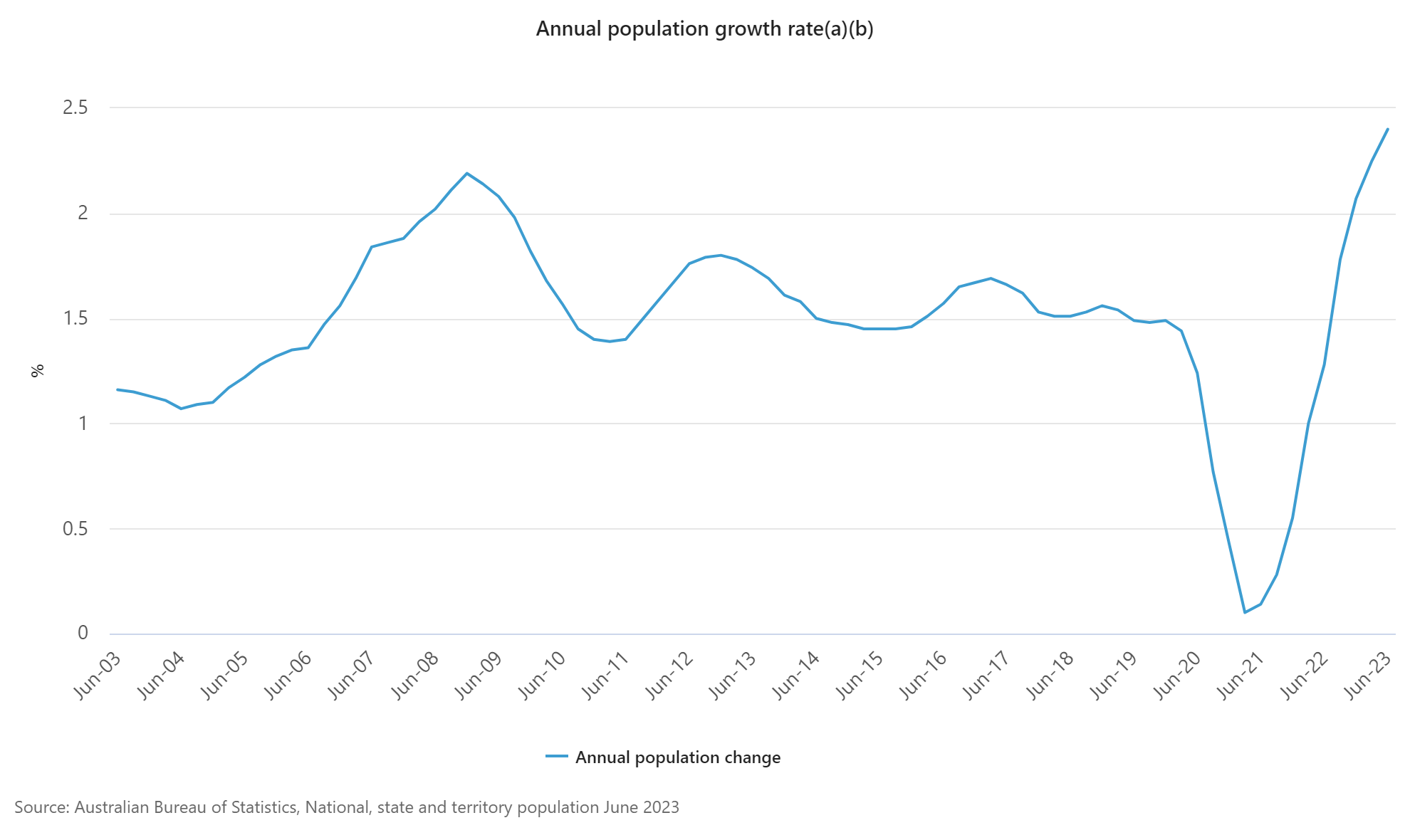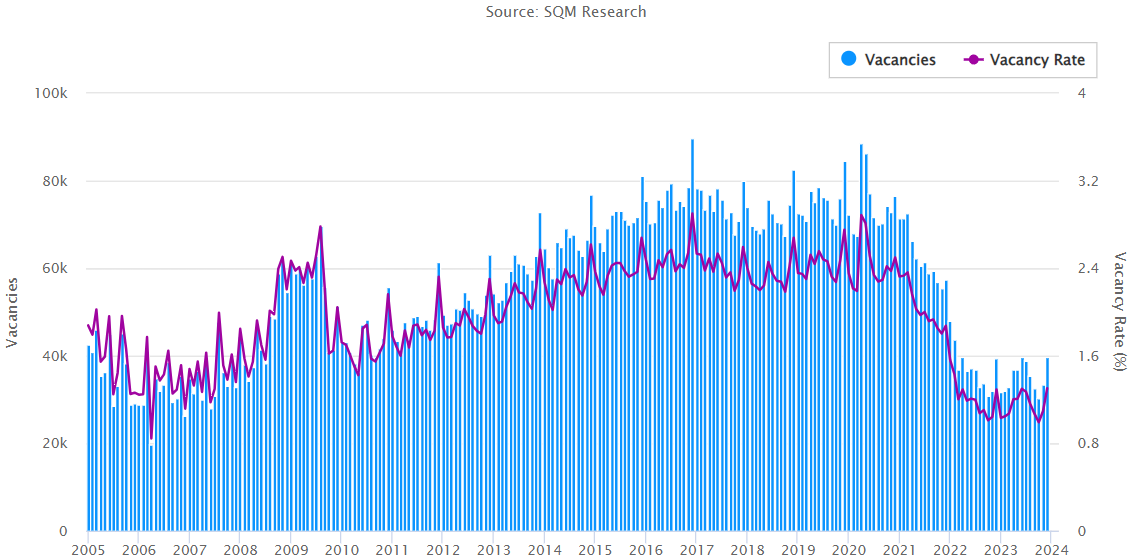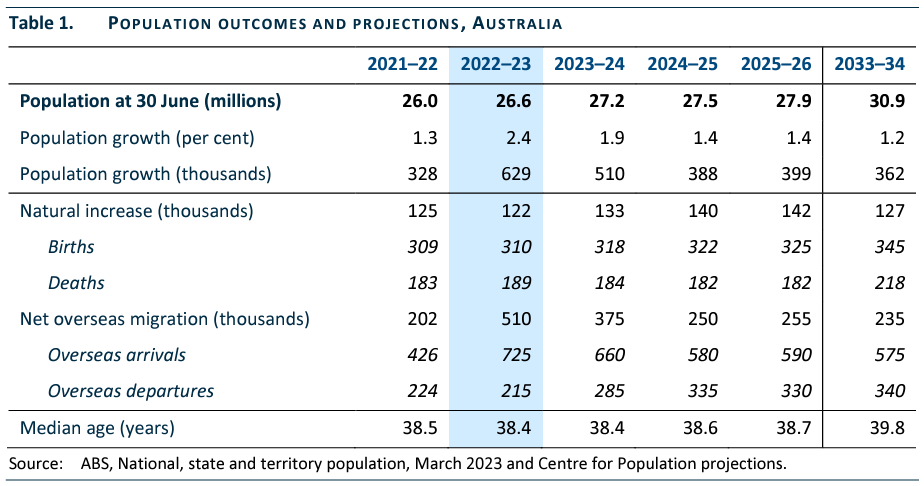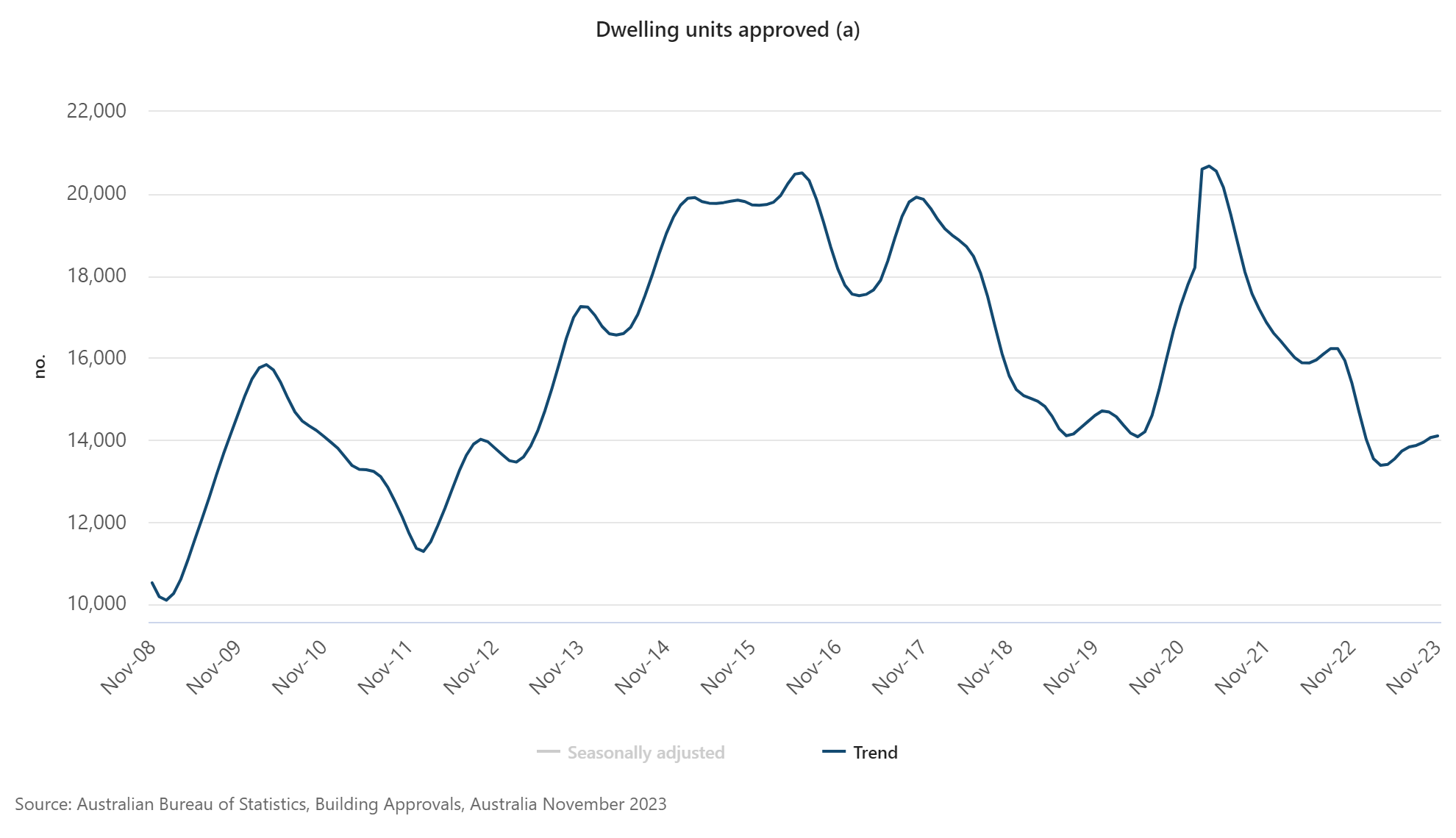The nation’s median rent rose another 8.3% in 2023, following increases of 9.5% in 2022 and 9.6% in 2021, according to CoreLogic.
What is driving such strong rental growth?
The answer is strong demand from tenants coupled with an undersupply of rental properties.
The strong tenant demand is being driven by the fastest population growth since the 1970s, with our population increasing 2.4% in the 2022-23 financial year, according to the most recent data from the Australian Bureau of Statistics.

Not only has the population been growing strongly, but a very large share (83%) of the new additions to our population in 2022-23 were overseas migrants. The reason that’s significant is because the vast majority of migrants start as renters when they move to Australia.
A large increase in the population – especially when driven by a large increase in migration – requires a large increase in rental accommodation. But as this SQM Research graph shows, rental supply has been lagging demand.

The number of vacant rental properties (the blue columns) across the country is at the lowest level since 2010, when the population was not 26.6 million like it is today but 22.0 million. And the vacancy rate (the purple line), which measures the share of empty rental properties, is at the lowest level since 2008.
Why rental demand will keep rising
The Centre for Population recently forecast that Australia’s population growth will gradually slow over the next decade, falling from 2.4% in 2022-23 to 1.2% in 2033-34. However, that’s still a meaningful level of population growth, and will mean another 4.3 million people get added to our population over the next decade.

That will mean increased demand for rental accommodation, which means we will also need an increase in our housing supply.
However, as this Australian Bureau of Statistics graph shows, home building approvals have been trending down.

That means it’s possible that rental supply will fail to keep up with demand. If that happens, the vacancy rate will remain low, which will continue to put upwards pressure on rents.
Of course, nothing can be guaranteed. But the data suggests that rents are likely to keep increasing in the foreseeable future.

